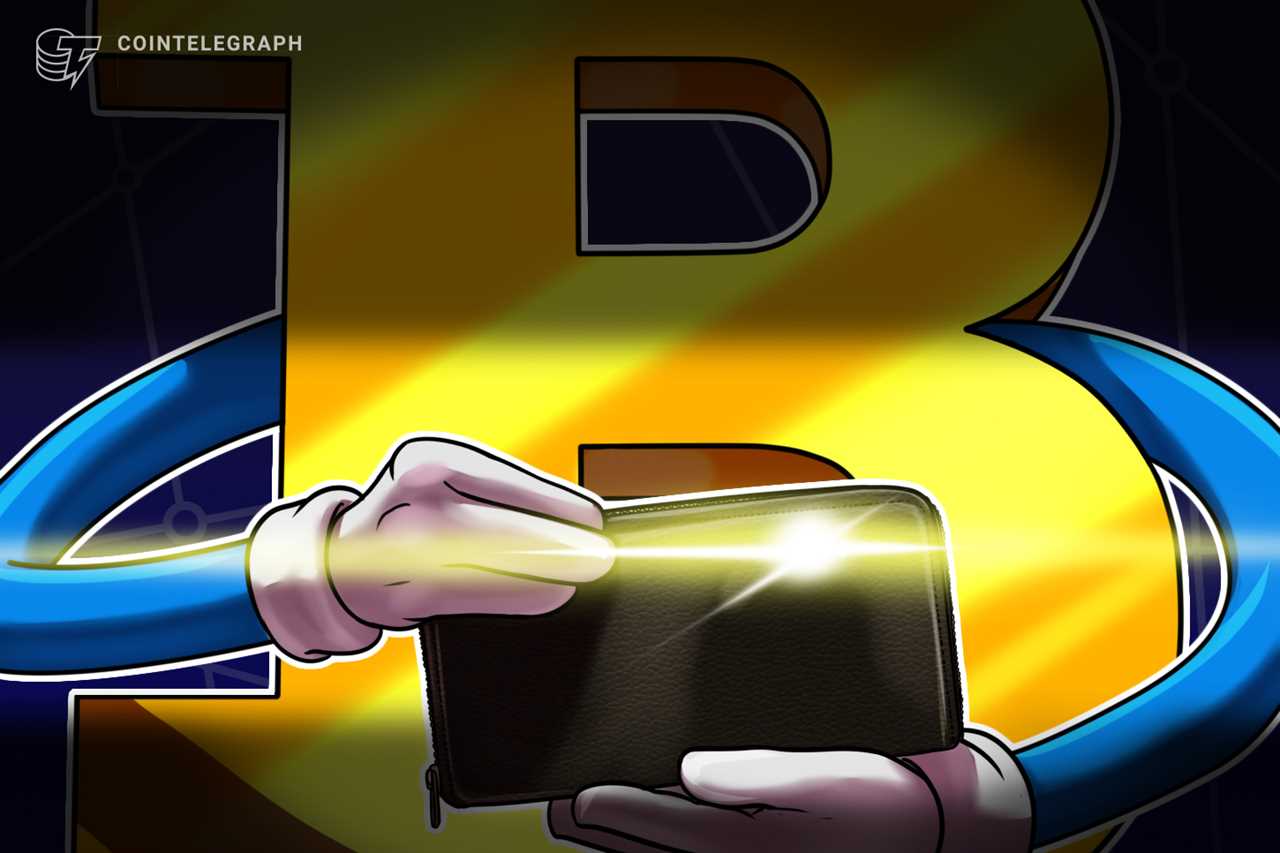
Transparency is one of the most intriguing aspects of cryptocurrency and it was this openness that drew many early supporters to Bitcoin (BTC).
Blockchain technology makes all information associated with the network’s operation accessible for anyone interested in taking a look. Every known address, transaction, fee paid and other details relating to multisignature and SegWit usage is out in the open.
The top 15 wealthiest Bitcoin addresses have always been the centerpiece of attention for several reasons. Some crypto researchers habitually sort through the top addresses searching for the footsteps of Bitcoin creator Satoshi Nakamoto. Others study data to track the maneuvers of crypto whales and predict market manipulation that results in volatile price swings in the Bitcoin price.
The top addresses have even caught the eye of government agencies like the United States Internal Revenue Service as well as the Treasury Department.
In fact, entire companies specializing in obtaining additional information on cryptocurrency addresses and their potential associations have been formed. It’s no secret that the U.S. Internal Revenue Service hired Chainalysis and Integra FEC, two crypto analytics firms, to track transactions.
More recently, under Treasury Secretary Steven Mnuchin, the Treasury Department is considering whether or not a rule on self-hosted cryptocurrency wallets is required. If approved, these changes emphasize the importance of privacy for market participants.
Addresses are not the same as entities
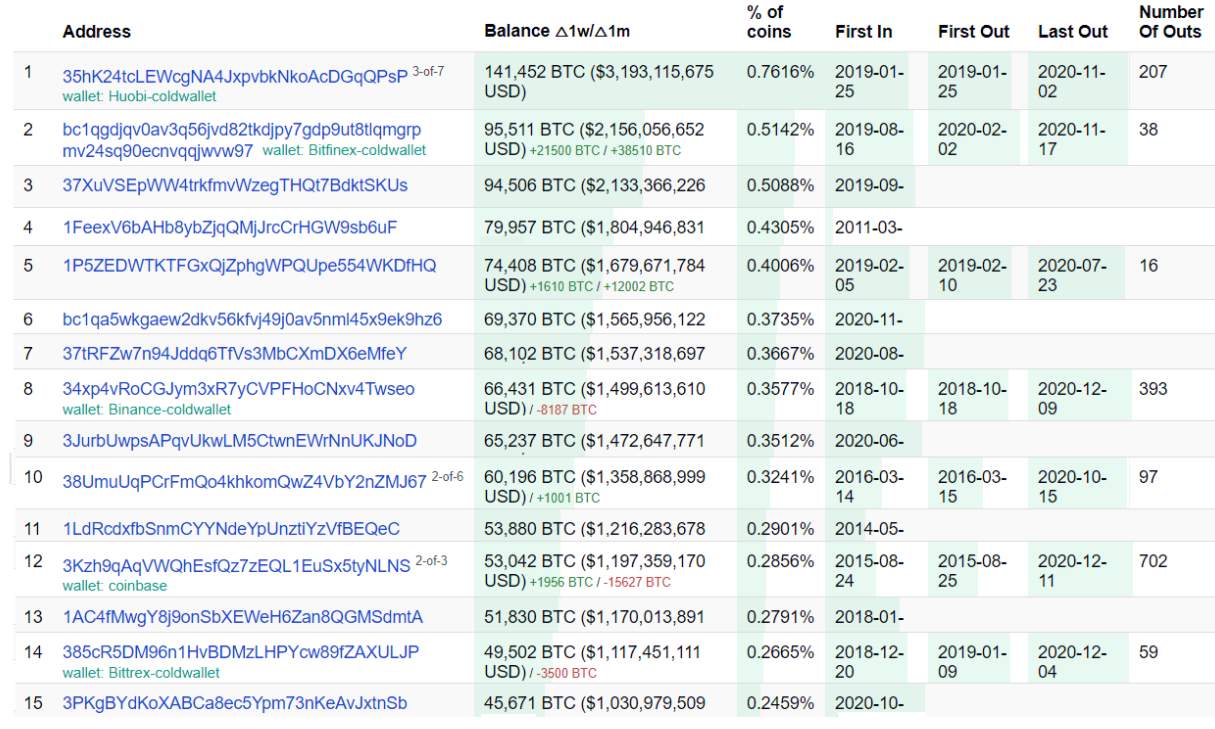
As shown above, the top 15 addresses hold 1.07 million BTC, or 5.7% of the outstanding Bitcoin supply. At the current $26,500 price level, this equals $28.3 billion. While this is a large amount of Bitcoin, it’s also worth noting that BTC’s aggregated volume on spot exchanges surpasses $5 billion per day.
It’s important to note that an address’s initial deposit date does not mean that the entity owning the address first acquired coins on that day. The coins could have been sent from another address belonging to the same entity. Therefore, the dates showing first funds being sent to 11 addresses since only 2018 do not prove that the address holders are new to the sector.
It is also worth noting that none of the top 15 addresses are rumored to be Satoshi’s holdings. Researcher Sergio Lerner has shown that the blocks Nakamoto mined contain unique patterns known as Patoshi patterns. Although that mined BTC has yet to be moved, it was not allocated to a single address.
The top 100 addresses concentrate 15.7% of the total supply, which is rather impressive compared to the level of distribution seen in traditional markets. For example, the top 20 funds owning PayPal shares hold a combined 19.7% of the total share supply.
Five of the 15 most significant addresses are known addresses from exchanges, indicating that the apparent concentration does not exist in a way that can be attributed to crypto whales.
In addition to exchanges holding large sums of Bitcoin in wallets, some custodians also accumulate BTC for numerous clients in wallets spread over multiple addresses with large sums.
The top addresses are recent holders and non-SegWit-compliant
An impressive eight out of the top 15 addresses have never withdrawn a single satoshi. Excluding the five exchange-related addresses, only 20% have ever moved their coins. This indicates a strong prevalence of hardcore holders.
Moreover, 11 of the 15 addresses were first used less than three years ago. Multiple reasons could be behind this oddity, including improved security measures, a change of custodian, or different ownership structures.
Only two out of the top 15 (and three in the top 200) addresses are Bech32 SegWit-compatible, which can significantly reduce transaction fees. This indicates that users are resistant to change despite the clear benefits of cheaper transactions. Even more interesting is that the Bitfinex cold wallet ranked second on the list is the only one that has ever had an outgoing transaction.
A few mysterious addresses keep stacking
The third wealthiest address is something of a mystery, as it contains an untouched 94,506 BTC. The address made headlines back in September 2019 after Glassnode reported that 73,000 of the BTC in the wallet had originated from Huobi.
Many analysts suggested that these coins were connected to the Plustoken Ponzi scheme, but these rumors were proven wrong after the Chinese police seized 194,775 BTC on Nov. 19 from the fraudulent exchange.
Aside from the fourth-largest wallet containing 79,957 BTC since March 2011, 20 of the top 300 addresses are over nine years old. Although no one can prove that these funds have been lost, most assume so.
Those untouched coins amount to 313,013 BTC, and only one address has ever transacted out since origination. Thus, apart from F2Pool’s 9,000 BTC held at address 1J1F3U7gHrCjsEsRimDJ3oYBiV24wA8FuV, there is a very good chance that the funds from the other addresses are effectively lost.
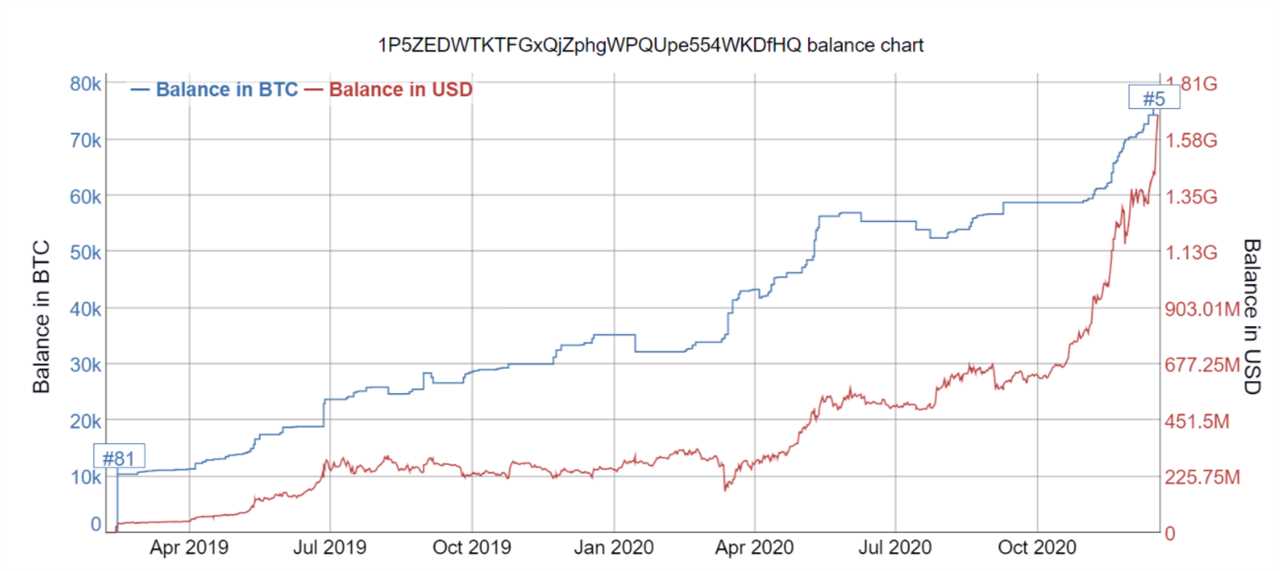
The fifth-ranked address shown above was created in February of 2019 and, at origination, was listed as the 81st-largest address. Since then, it has been accumulating regularly, adding from as low as 1 BTC in December 2019 to 4,100 in a single transaction in June 2019. Despite being a large accumulator, it has made seven transactions out, ranging from 786 BTC to 3,000 BTC. Maybe even whales have bills to be paid.
There are precisely 100 addresses first used between Nov. 30, 2018 and Dec. 18, 2018 containing around either 8,000 BTC or 12,000 BTC each. These addresses are commonly attributed to Coinbase Custody. Amounting to 881,471 BTC, the addresses’ funds equal to 96% of the exchange’s cold wallet, according to chain.info.
The new whale local top theory
Every investor has a gut feeling that the arrival of new Bitcoin whales is crucial for a sustained rally, even though there has never been hard evidence of this effect until now.
There is a constant flow of new addresses entering the top 300. For example, 16 of them received their first-ever deposits within the past 30 days. Once again, this is not necessarily a new entity but an address receiving its first-ever BTC.
Although it is uncommon, sometimes gaps of 50 or more days occur without newcomers joining the top 300. Coincidentally, these periods mark the end of rally periods, and a healthy correction usually follows.
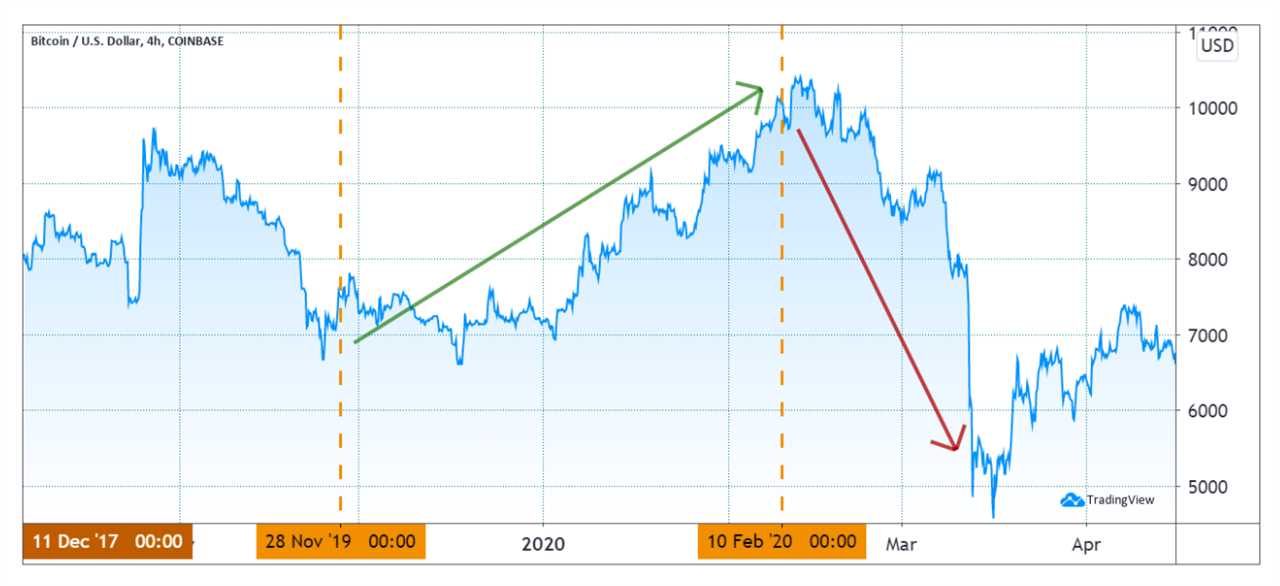
Precisely zero of the top 300 addresses were initially used between Nov. 28, 2019 and Feb. 09, 2020, when BTC went up by 35%. Oddly enough, the market plunged 52% over the next 32 days.
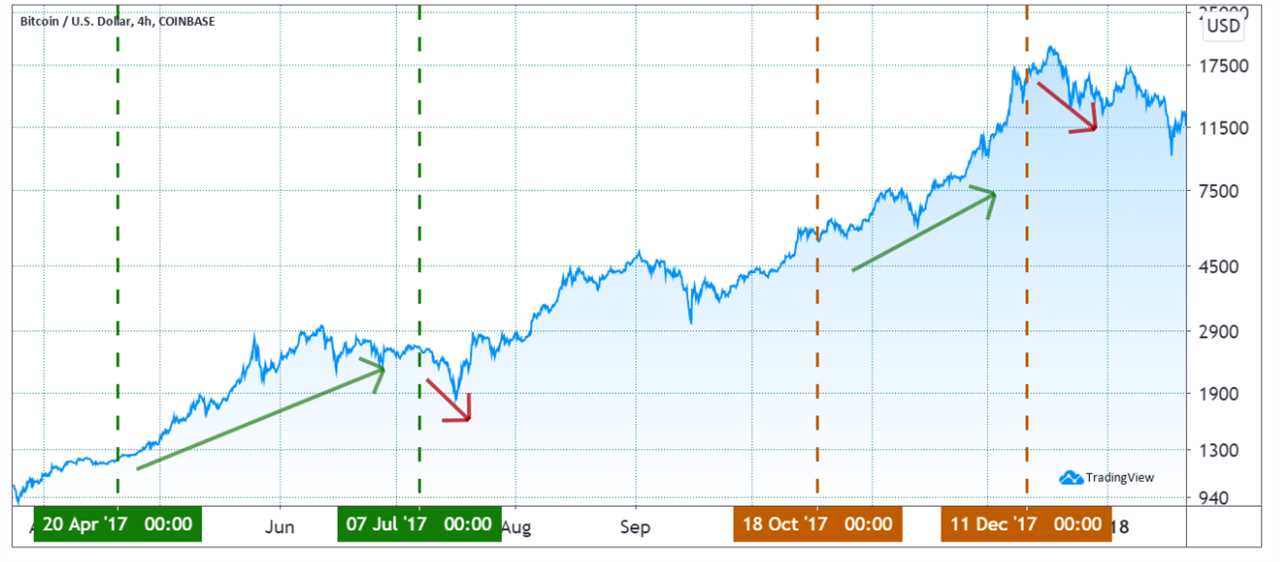
A similar effect happened between Oct. 18, 2017 and Dec. 11, 2017. During this period BTC rallied 193% while none of the top 300 addresses were newcomers. A 34% price drop occurred over the following 36 days.
Before that, none of the top 300 addresses were initiated between April 20, 2017 and July 07, 2017. Meanwhile, BTC soared 111%, while a 24% crash has also followed this period over the course of nine days.
So far, history has been proving that the new whale theory makes sense: The market rallies during prolonged periods of fewer new addresses making it to the top 300 holders list, as it indicates accumulation by entities that already had position. On the other hand, new whales could be driven by fear of missing out, which usually indicates local tops.
Therefore, it makes sense to monitor the top addresses and on-chain data to gauge potential corrections.
Every time large deposits enter exchanges, this indicates a potential sell order and is deemed bearish by traders. These movements are then compared to BTC price tops and bottoms in an attempt to find some correlation between whale transfers.
Whenever the market is rallying and miners, in turn, reduce selling, analysts expect a price correction once they start moving coins again. To put things in perspective, this is 6,300 Bitcoin per week that needs to be absorbed by the market to avoid price impact.
Now that institutional investors have “arrived,” investors will be itching to see whether their inflow in 2021 will continue to absorb newly minted BTC.
While 2021 is looking pretty bullish for the crypto market, there is always an unexpected price crash that often results from the government threatening regulation.
This means it will still be important for savvy investors to follow the top 15 Bitcoin addresses and the movements of crypto whales in 2021.
author and do not necessarily reflect the views of Cointelegraph. Every investment and trading move involves risk. You should conduct your own research when making a decision.
Title: 4 reasons why the top 15 richest Bitcoin wallets still matter in 2021
Sourced From: cointelegraph.com/news/4-reasons-why-the-top-15-richest-bitcoin-wallets-still-matter-in-2021
Published Date: Thu, 31 Dec 2020 21:25:53 +0000






